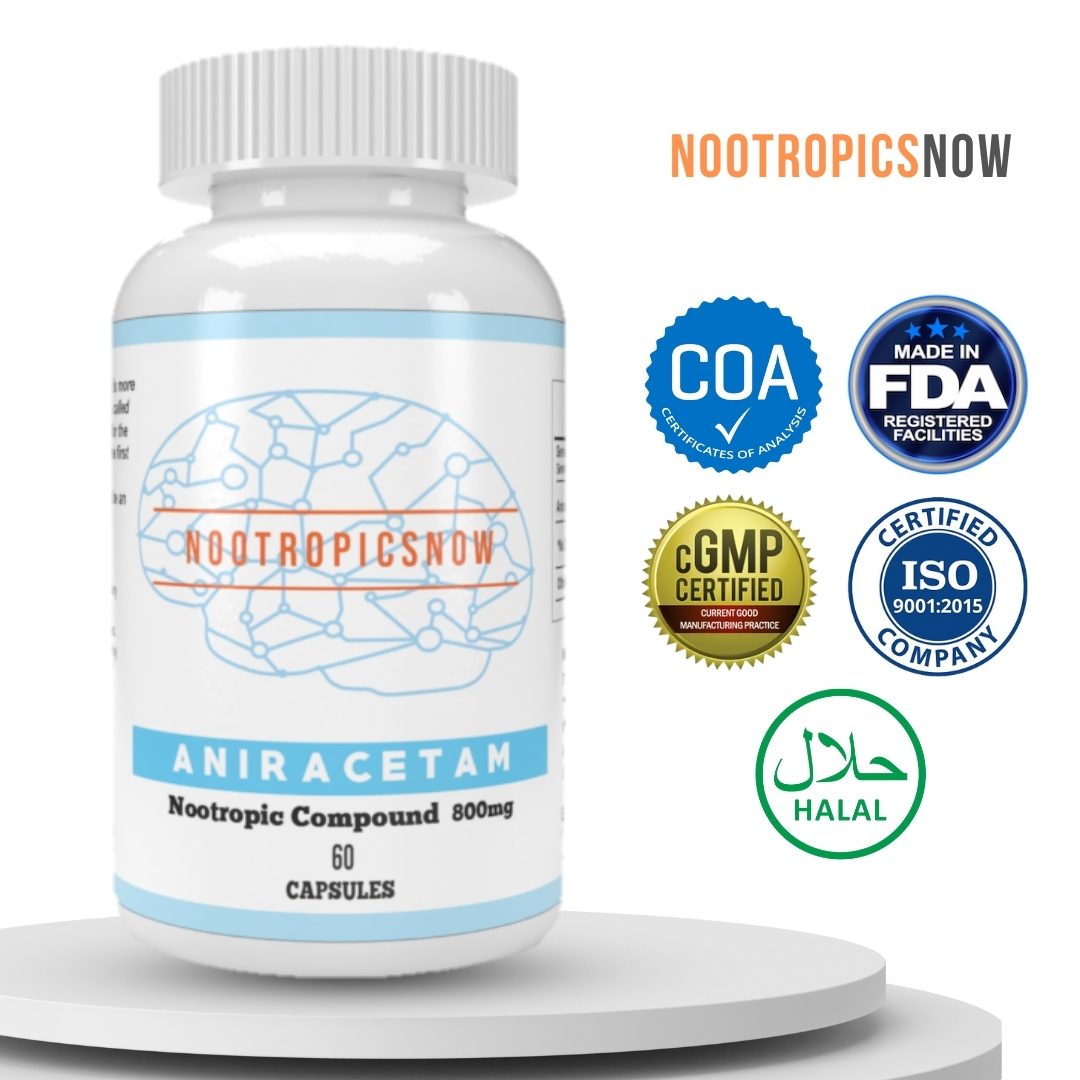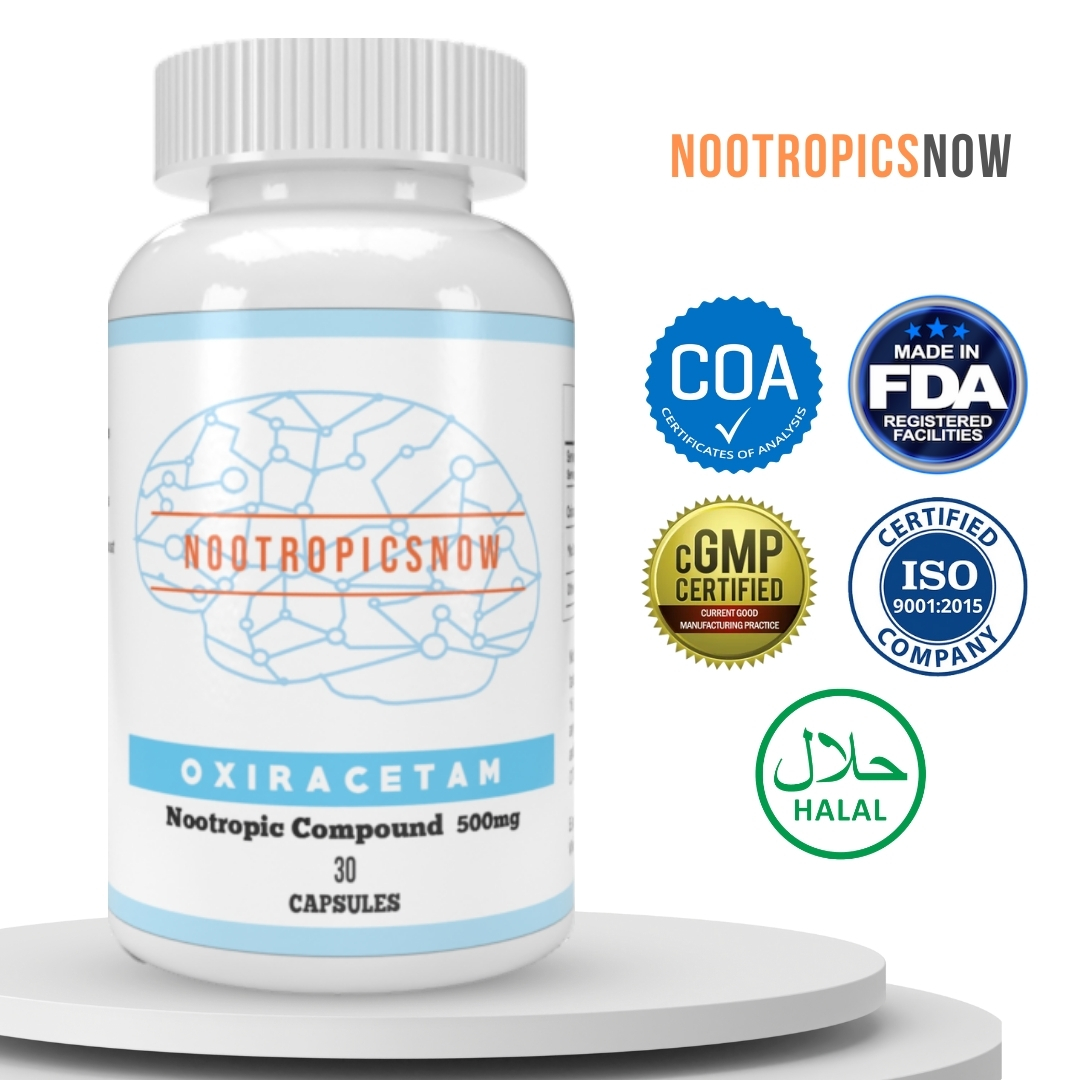Coluracetam: Benefits, Dosage & Effects

Coluracetam: A Comprehensive Guide to Benefits, Dosage, and Research
Coluracetam, a synthetic nootropic belonging to the racetam family, has emerged as a fascinating compound within the realm of cognitive enhancement. It distinguishes itself through a unique mechanism of action that primarily influences choline uptake, ultimately affecting acetylcholine levels. This comprehensive guide explores the mechanisms, benefits, research, usage, and potential side effects of coluracetam, providing a detailed overview for those interested in exploring its potential.
Understanding Coluracetam
Coluracetam (BCI-540; MKC-231) is a synthetic nootropic drug developed by Mitsubishi Tanabe Pharma Corporation. Though initially investigated for Alzheimer’s disease, its potential cognitive-enhancing and mood-altering properties have drawn broader interest. Unlike many other racetams that directly stimulate acetylcholine receptors, coluracetam primarily enhances high-affinity choline uptake (HACU). This subtle difference in mechanism contributes to its distinctive effects.
What are Racetams?
Racetams are a class of synthetic compounds sharing a pyrrolidone core structure. Piracetam, the first nootropic racetam, served as a prototype for other compounds such as aniracetam, oxiracetam, pramiracetam, and eventually, coluracetam. These drugs are known for their purported ability to enhance cognitive function, especially memory, learning, and focus. However, the precise mechanisms of action and efficacy levels vary among them.
How Coluracetam Differs
While most racetams act by modulating neurotransmitter receptors, coluracetam uniquely enhances choline uptake into neurons. Choline is a precursor to acetylcholine, a crucial neurotransmitter involved in memory, learning, and attention. By boosting choline uptake, coluracetam supports the synthesis and release of acetylcholine.
Mechanisms of Action: How Does Coluracetam Work?
The primary mechanism of coluracetam centers on enhancing high-affinity choline uptake (HACU) at nerve endings. This process is essential because the availability of choline often limits the rate of acetylcholine synthesis. By facilitating choline uptake, coluracetam effectively increases acetylcholine production, impacting several cognitive processes.
High-Affinity Choline Uptake (HACU)
HACU is the rate-limiting step in acetylcholine synthesis. Coluracetam’s activity in this area involves enhancing the activity of choline transporters located on presynaptic neurons. This enhancement helps ensure a consistent supply of choline available for the production of acetylcholine. It is important to note, however, that other factors still influence acetylcholine levels, including the presence of choline acetyltransferase (ChAT), an enzyme which catalyses the reaction of choline and acetyl-CoA to form acetylcholine.
Modulation of Choline Transporters
Coluracetam is believed to modulate the function of specific choline transporters, such as the choline transporter-1 (CHT1), facilitating the movement of choline across the cell membrane into neurons. This modulation results in sustained acetylcholine production, directly influencing cognitive processes like memory and learning.
Other Potential Mechanisms
While HACU enhancement is the primary known mechanism, coluracetam may also interact with other neurotransmitter systems, although these interactions are less well-defined. Some theories suggest potential modulation of glutamate receptors and effects on ion channels. However, these remain areas of ongoing research.
Benefits of Coluracetam
Coluracetam is associated with several purported cognitive and mood-related benefits, ranging from memory enhancement to visual acuity improvement. Although research is still evolving, many users report positive experiences.
While Coluracetam is a popular choice, it’s worth exploring other Racetams that may offer synergistic effects.
Memory Enhancement
Improved memory is among the most frequently cited benefits of coluracetam. By increasing acetylcholine levels, coluracetam enhances both short-term and long-term memory formation and recall.
Mood Enhancement and Anxiety Relief
Coluracetam has shown potential anxiolytic and antidepressant effects, making it valuable in managing mood disorders. Its unique mechanism of action may provide benefits without the side effects often associated with conventional antidepressants.
Enhanced Visual Perception
One of the more unique reported benefits of coluracetam is its impact on visual perception, particularly color vision and clarity. This effect is often described as making colors appear more vivid and shapes more defined.
Focus and Concentration
By improving acetylcholine transmission, coluracetam can sharpen focus and concentration, making it easier to stay on task. This makes it a popular choice for students, professionals, and anyone seeking to enhance their cognitive performance.
Research and Clinical Trials
Although research on coluracetam is ongoing, some clinical trials and animal studies have provided valuable insights into its potential benefits.
Phase 2 Clinical Trial for Major Depressive Disorder (MDD)
BrainCells Inc. conducted a Phase 2 clinical trial focusing on coluracetam as a treatment for MDD with comorbid generalized anxiety disorder (GAD). This placebo-controlled study involved participants receiving 240 mg of coluracetam per day (divided into three 80 mg doses) over six weeks. The results indicated that coluracetam was more effective than the placebo in reducing depressive symptoms in a subgroup of patients exhibiting treatment resistance. While the study did not meet all of its primary endpoints, the positive signals observed in the treatment-resistant population suggested the potential of coluracetam in treating specific mood disorders.
Animal Studies
Several animal studies have explored the cognitive effects of coluracetam. These studies have often demonstrated enhanced learning and memory in rodents, particularly those with pre-existing cognitive deficits. Some research also indicates that coluracetam can improve synaptic plasticity, a crucial process for learning and memory formation.
Limitations of Current Research
It’s important to acknowledge the limitations of existing research. Much of the evidence is preliminary, and more extensive human trials are necessary to confirm the observed benefits and determine optimal dosages. Additionally, long-term effects and safety profiles still require thorough investigation.
Dosage and Usage
Proper dosage and usage are crucial for maximizing the benefits of coluracetam while minimizing potential side effects.
Recommended Dosage
The typical dosage ranges from 20 mg to 80 mg per day. Many users divide this dose into two or three administrations throughout the day, such as taking 20-40mg in the morning and again in the early afternoon. Due to limited research, there’s no established “optimal” dosage; individual responses can vary significantly.
Administration
Coluracetam is commonly available in powder or capsule form. The powder can be dissolved in water or another liquid for consumption.
Cycling
Some users suggest cycling coluracetam, meaning taking it for a certain period followed by a break. This strategy aims to prevent tolerance and maintain its effectiveness over time. Common cycles include taking coluracetam for a few weeks to a few months, followed by a similar length of time off.
Stacking
Stacking involves combining coluracetam with other nootropics to amplify its effects. Common combinations include:
Side Effects and Precautions
While generally considered safe, coluracetam can cause side effects in some individuals.
Common Side Effects
Precautions
User Experiences and Anecdotal Evidence
User experiences with coluracetam are varied, but many individuals report positive effects. These anecdotal reports can offer valuable insights into the practical benefits and potential drawbacks of coluracetam.
Positive Experiences
Negative Experiences
Legal Status and Availability
The legal status of coluracetam varies by country. In many regions, it is available as a research chemical or dietary supplement. However, it is essential to check local regulations before purchasing or using coluracetam.
Purchasing Options
Coluracetam can be purchased online from various vendors specializing in nootropics and research chemicals. When buying online, ensure that the vendor is reputable and provides third-party testing to verify the purity and potency of the product.
Cost Considerations
The cost of coluracetam can vary depending on the vendor and the quantity purchased. It is generally more expensive than other racetams like piracetam but may be more affordable than some newer nootropics.
Conclusion
Coluracetam is a unique and promising nootropic compound known for its ability to enhance choline uptake and acetylcholine production. Its potential benefits include improved memory, mood enhancement, enhanced visual perception, and increased focus. While more research is needed to fully understand its effects, existing evidence and anecdotal reports suggest it can be a valuable tool for cognitive enhancement. However, it is essential to use it responsibly, starting with a low dose, monitoring individual response, and consulting with a healthcare professional when necessary. By taking a cautious and informed approach, users can safely explore the potential cognitive benefits of coluracetam.
Coluracetam: A Detailed Exploration of Benefits, Dosage, and Effects
Coluracetam, a synthetic nootropic substance belonging to the racetam family, has garnered increasing interest within the cognitive enhancement community. Developed initially to treat Alzheimer’s disease, Coluracetam has demonstrated promising effects on memory, mood, and sensory perception. Understanding its mechanisms, benefits, and potential side effects is crucial for anyone considering its use. Therefore, let’s delve into Coluracetam in detail.
Understanding Coluracetam’s Mechanism of Action
Coluracetam primarily functions as a high-affinity choline uptake (HACU) enhancer. Moreover, it acts on choline transporters, promoting the reuptake of choline into nerve cells. Consequently, this action increases the availability of choline, a crucial precursor to the neurotransmitter acetylcholine. Acetylcholine plays a pivotal role in various cognitive processes. These processes include memory formation, learning, and attention. This unique mechanism sets Coluracetam apart from other racetams. Other racetams typically modulate neurotransmitter receptors directly rather than enhancing choline uptake. Therefore, this makes it a potentially valuable tool for cognitive enhancement. Furthermore, it could be valuable in managing conditions associated with acetylcholine deficiency.
Cognitive Benefits of Coluracetam
Coluracetam offers several potential cognitive benefits. These are primarily associated with its ability to enhance cholinergic neurotransmission.
Research and Clinical Studies on Coluracetam
The scientific understanding of Coluracetam is still evolving. However, existing research and clinical studies provide valuable insights into its potential applications.
Coluracetam Dosage Guidelines
Determining the correct dosage of Coluracetam is essential to maximizing its benefits while minimizing potential side effects. Because individual responses can vary, starting with a conservative dose and gradually adjusting it is advisable.
Potential Side Effects and Safety Considerations
While Coluracetam is generally considered safe, it’s essential to be aware of potential side effects and safety considerations. As with any nootropic substance, individual reactions can vary. Thus, it’s vital to exercise caution and monitor your body’s response.
User Experiences and Anecdotal Reports
Anecdotal reports from Coluracetam users provide valuable insights into its subjective effects and real-world applications. Remember, these experiences are individual and should not replace scientific evidence.
Stacking Coluracetam with Other Nootropics
Many nootropic enthusiasts explore stacking Coluracetam with other cognitive enhancers. Stacking refers to combining multiple substances to achieve synergistic effects. This often enhances the benefits beyond what could be achieved with a single substance.

View Product

View Product
Before experimenting with stacks, consider purchasing Coluracetam on its own to gauge its individual effects:

View Product
Legal Status and Availability
The legal status of Coluracetam varies depending on the country. In many regions, it is unregulated and can be purchased for research purposes. However, it is not typically approved as a pharmaceutical drug for specific medical conditions. It’s important to check local regulations. Ensure compliance with the laws regarding the purchase and use of Coluracetam in your region.
Final Thoughts on Coluracetam
Coluracetam presents a compelling option for those seeking to enhance cognitive function and improve mood. Its mechanism of action, focusing on choline uptake and acetylcholine production, sets it apart from many other nootropic compounds. While research supports its potential benefits, further studies are needed to fully understand its effects and long-term safety.
For individuals considering Coluracetam, careful research, responsible dosing, and awareness of potential side effects are paramount. Consulting with a healthcare professional before starting any nootropic regimen is highly recommended. By taking a thoughtful and informed approach, users can maximize the benefits of Coluracetam. It will also minimize potential risks.





